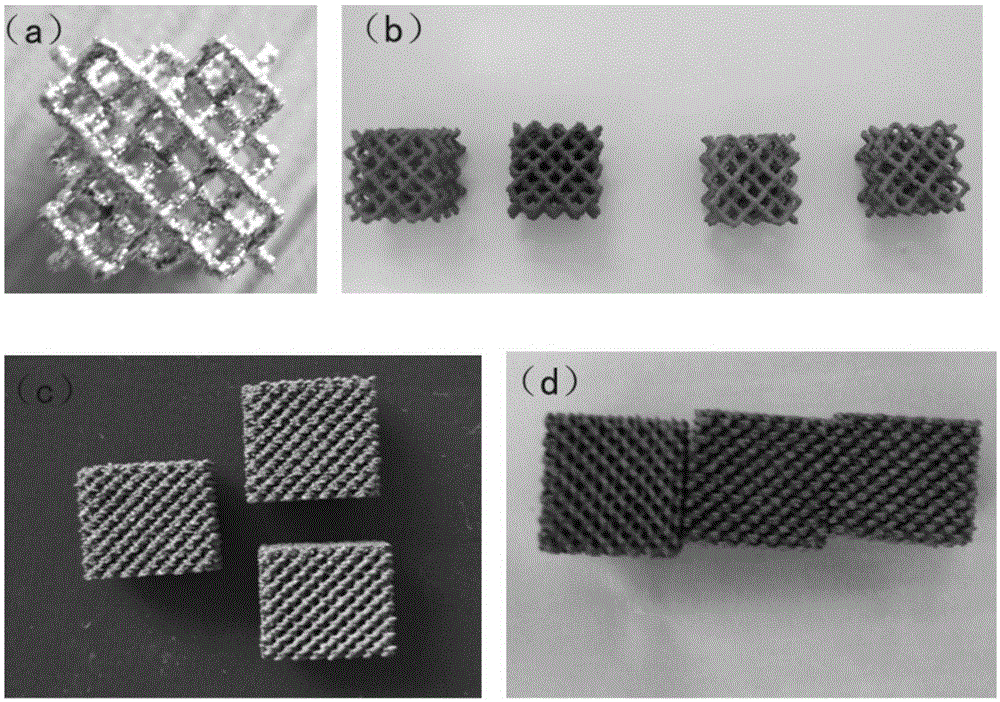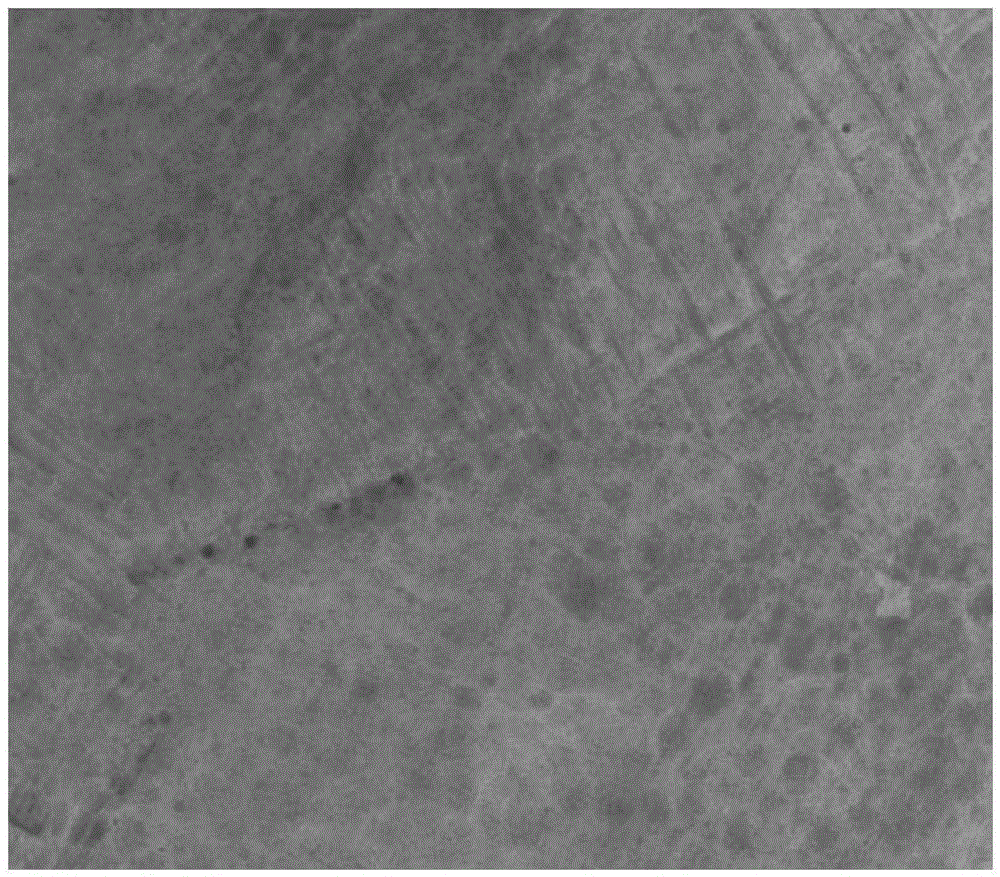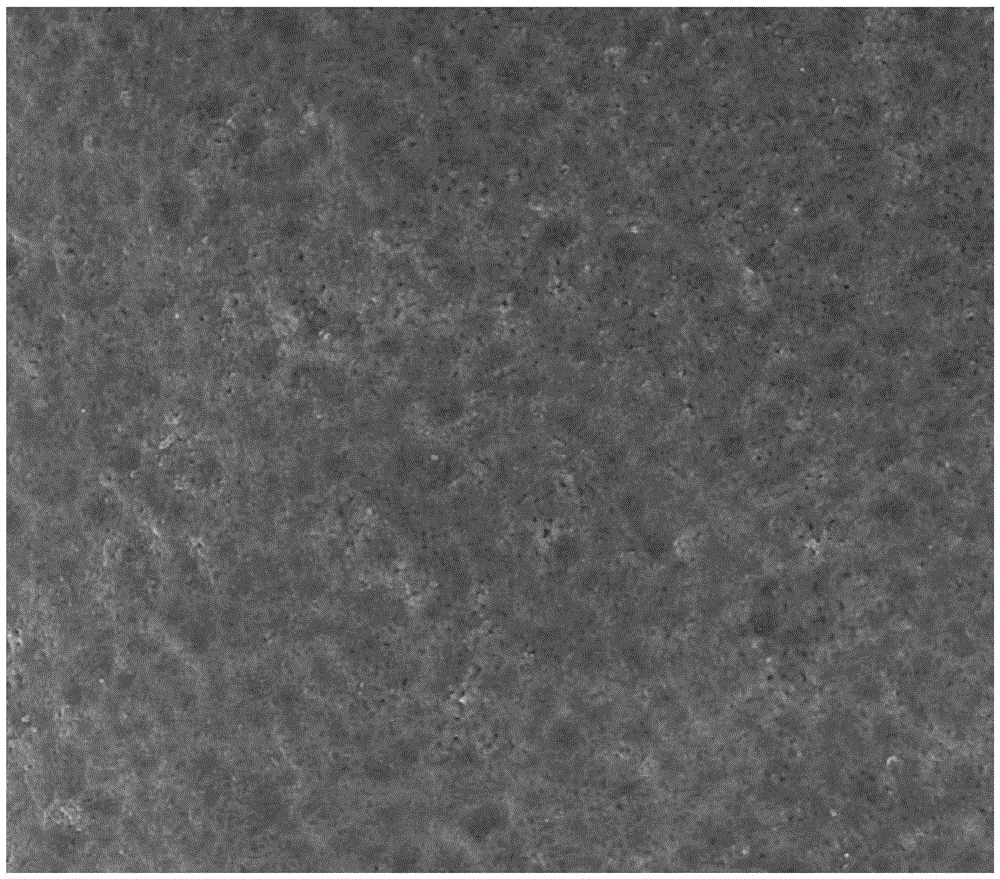Preparation method of porous biological activity ceramic film on surface of porous pure titanium or titanium alloy with lattice structure and application thereof
A technology of bioactive ceramics and lattice structure, applied in the direction of surface reaction electrolytic coating, electrolytic coating, coating, etc., to achieve the effect of good combination, high biological activity and uniform thickness
- Summary
- Abstract
- Description
- Claims
- Application Information
AI Technical Summary
Problems solved by technology
Method used
Image
Examples
Embodiment 1
[0039] 1. Material preparation: Ti-6Al-4V titanium alloy with a porosity of 50% and porous lattice structure was prepared by electron beam molten metal forming technology ( figure 1 (a)).
[0040] 2. Chemical pickling:
[0041] The pickling solution is composed of: 40% (volume concentration) HF 2ml / L, 70% (volume concentration) HNO 3 5ml / L, citric acid 5g / L, the slow-release agent is o-nitrophenol, and the rest is water.
[0042] Pickling liquid temperature: room temperature, processing time 20 seconds, immediately wash with tap water for 1 to 2 minutes after taking out, and then wash with deionized water for 1 to 2 minutes.
[0043] 3. Preparation of prefabricated anodized film:
[0044] Electrolyte composition: sodium dihydrogen phosphate with a concentration of 30g / L, sodium oxalate with a concentration of 5g / L, oxalic acid with a concentration of 1g / L, sodium dodecylsulfonate with a concentration of 0.5g / L, and the rest is water .
[0045] In the process of oxide fil...
Embodiment 2
[0054] 1. Material preparation: Ti-6Al-4V titanium alloy with porosity of 70% and porous lattice structure was prepared by electron beam molten metal forming technology ( figure 1 (c)).
[0055] 2. Chemical pickling:
[0056] The pickling solution is composed of: 40% (volume concentration) HF 1ml / L, 70% (volume concentration) HNO 3 3ml / L, tartaric acid 3g / L, sustained-release agent is p-dinitrophenol, and the rest is water.
[0057] Pickling liquid temperature: room temperature, processing time 20 seconds, immediately wash with tap water for 1 to 2 minutes after taking out, and then wash with deionized water for 1 to 2 minutes.
[0058] 3. Preparation of prefabricated anodized film:
[0059] Electrolyte composition: sodium dihydrogen phosphate with a concentration of 20g / L, sodium oxalate with a concentration of 8g / L, phosphoric acid with a concentration of 0.5g / L, sodium dodecylsulfonate with a concentration of 0.5g / L, and the rest water.
[0060] During the preparation...
Embodiment 3
[0069] 1. Material preparation: The β-titanium alloy with a porosity of 60% and a porous lattice structure was prepared by electron beam molten metal forming technology.
[0070] 2. Chemical pickling:
[0071] The pickling solution is composed of: 40% (volume concentration) HF 2ml / L, 70% (volume concentration) HNO 3 7ml / L, malic acid 5g / L, the slow-release agent is picric acid, and the rest is water.
[0072] Pickling liquid temperature: room temperature, processing time 20 seconds, immediately wash with tap water for 1 to 2 minutes after taking out, and then wash with deionized water for 1 to 2 minutes.
[0073] 3. Preparation of prefabricated anodized film:
[0074] Electrolyte composition: sodium dihydrogen phosphate with a concentration of 20g / L, sodium oxalate with a concentration of 8g / L, phosphoric acid with a concentration of 2g / L, sodium lauryl sulfate with a concentration of 0.5g / L, and the rest is water.
[0075] During the preparation of the oxide film, circula...
PUM
| Property | Measurement | Unit |
|---|---|---|
| Thickness | aaaaa | aaaaa |
| Thickness | aaaaa | aaaaa |
| Thickness | aaaaa | aaaaa |
Abstract
Description
Claims
Application Information
 Login to View More
Login to View More - R&D
- Intellectual Property
- Life Sciences
- Materials
- Tech Scout
- Unparalleled Data Quality
- Higher Quality Content
- 60% Fewer Hallucinations
Browse by: Latest US Patents, China's latest patents, Technical Efficacy Thesaurus, Application Domain, Technology Topic, Popular Technical Reports.
© 2025 PatSnap. All rights reserved.Legal|Privacy policy|Modern Slavery Act Transparency Statement|Sitemap|About US| Contact US: help@patsnap.com



